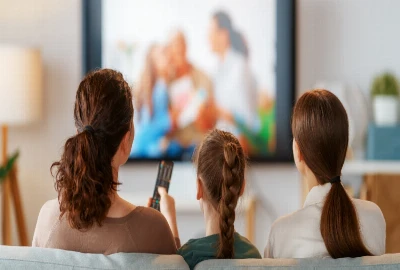Algorithmic Aesthetics: TikTok’s Visual Grammar Becomes the Norm

TikTok has done more than create viral dances and catchy audio snippets; it has fundamentally reshaped how people create, consume, and interpret visual content. At the core of this transformation lies what media theorists call algorithmic aesthetics—a blend of design, editing styles, and visual grammar tailored to satisfy the platform’s algorithm while engaging audiences. TikTok’s visual grammar isn’t just about quick cuts, captions, and trending audio. It is about building a standardized way of telling stories that optimizes for both human attention spans and algorithmic promotion.
As short-form video continues to dominate social media ecosystems, TikTok’s style is no longer confined to the platform itself. Instagram Reels, YouTube Shorts, and even traditional advertising campaigns have absorbed TikTok’s editing patterns. From rapid jump cuts to text overlays and reaction-style content, what was once platform-specific has now become the global language of digital media.
This blog explores how TikTok’s visual grammar has evolved, why it resonates so deeply, and how brands, creators, and audiences are adapting to this new media environment.
Defining TikTok’s Visual Grammar

Short-Form Storytelling in Motion
TikTok’s visual grammar thrives on brevity. Videos typically last between 15 to 60 seconds, requiring creators to communicate stories in micro-bursts of narrative. Instead of long introductions or drawn-out explanations, content jumps directly into the action. This immediacy has redefined storytelling rules across digital media.
Editing as a Narrative Device
Unlike traditional film or TV, where editing is often invisible, TikTok foregrounds editing as part of the story. Jump cuts, split screens, on-screen captions, and “greenscreen effects” aren’t background tools—they are storytelling features. This has normalized editing as performance, where viewers expect creators to layer humor, context, or commentary through visual manipulation.
The Role of Algorithm-Friendly Aesthetics
TikTok’s algorithm doesn’t just recommend content based on interests—it actively shapes visual grammar. Creators adopt platform-specific aesthetics, such as vertical framing, trending sounds, and attention-grabbing captions, because they perform better. This feedback loop of style and algorithmic preference ensures certain formats dominate, making TikTok’s algorithm-driven grammar a global norm.
Why TikTok’s Style Resonates Globally

Designed for Mobile-First Audiences
Unlike YouTube or Instagram’s earlier content, TikTok was born mobile. Its vertical video format matches how people naturally hold their phones. Add in full-screen immersion and swipe-to-next ease, and TikTok offers a frictionless user experience that other platforms rushed to replicate.
Speed Meets Attention Economy
In an age of shrinking attention spans, TikTok’s rapid pacing aligns perfectly with modern consumption habits. Every cut, caption, or trending audio cue keeps viewers hooked. This rhythm of fast, looping content mirrors the dopamine-driven cycles of social media, making it addictive and globally appealing.
Cultural Translation Through Visual Tropes
TikTok’s grammar also transcends language barriers. Meme templates, reaction formats, and shared sounds serve as universal storytelling devices. Whether in Seoul, São Paulo, or San Francisco, viewers recognize the familiar visual cues that guide them through content, making TikTok’s grammar a cultural bridge.
Algorithmic Aesthetics in Action

The Feedback Loop Between Creator and Algorithm
Creators don’t just make content—they train the algorithm. Each trend that gains traction influences what the platform boosts, which in turn pushes more creators to replicate the same formats. This recursive cycle ensures the constant evolution of visual grammar while standardizing content aesthetics.
Popular Visual Templates
Certain styles dominate TikTok’s grammar, including:
Before-and-after transitions (common in beauty and fitness niches).
Reaction stitches and duets (where creators interact directly with other videos).
Text overlays timed to audio beats (blending storytelling with rhythm).
These templates now extend beyond TikTok, appearing in Instagram Reels, advertising campaigns, and even educational content.
Algorithm as Co-Creator
In this environment, the algorithm is not just a distribution tool—it is a co-creator. Creators often tailor content to what they believe the algorithm prefers, from video length to editing style. This relationship blurs the line between artistic choice and algorithmic necessity.
The Impact on Creators and Storytelling

Democratization of Media Production
TikTok’s accessible editing tools have lowered the barrier to entry. Anyone with a smartphone can adopt the platform’s visual grammar, creating professional-looking content without specialized equipment. This democratization has turned everyday users into cultural producers.
Compression of Narrative Structures
Traditional narratives with beginnings, middles, and ends don’t always fit into 15 seconds. TikTok has popularized modular storytelling—fragmented content that conveys emotion or meaning in slices, often relying on audience familiarity with trends to fill in the gaps.
Shifting Creative Identity
For creators, visual grammar dictates brand identity. A cooking influencer might rely on quick cuts, text pop-ups, and trending sounds to maintain relevance. This algorithm-dependent creativity challenges traditional notions of artistic originality, as creators must constantly adapt their style to align with evolving grammar.
Beyond TikTok: Cross-Platform Influence

Instagram Reels and YouTube Shorts
When Instagram launched Reels and YouTube introduced Shorts, both adopted TikTok’s grammar wholesale. Features like vertical video, looping audio, and remix tools became industry standards. Even legacy platforms like Facebook and Twitter (now X) have experimented with TikTok-inspired short-form features.
Advertising and Brand Campaigns
Brands are now designing campaigns around TikTok-style grammar. Instead of polished commercials, many opt for user-generated style ads with lo-fi editing, text overlays, and viral soundtracks. This aesthetic appeals to Gen Z audiences, who prioritize authenticity over perfection.
Mainstream Media Adaptation
News outlets, sports franchises, and even government organizations now craft TikTok-style clips to reach younger audiences. By using the grammar of memes, captions, and short-form pacing, they adapt serious content into algorithm-friendly narratives that engage global viewers.
The Future of Algorithmic Aesthetics

From TikTok to Everyday Communication
What started as a platform-specific style is fast becoming a digital lingua franca. Just as emojis redefined text communication, TikTok’s grammar may influence everyday communication patterns—where captions, cuts, and audio cues become default storytelling norms.
Risks of Standardization
While algorithmic aesthetics democratize creation, they also risk homogenization. If every creator adheres to the same visual rules, creativity may narrow into predictable templates. This raises critical questions about the trade-off between visibility and originality.
The Next Wave: AI and Beyond
With AI tools integrated into TikTok and competing platforms, algorithmic aesthetics may evolve further. Auto-editing, AI-generated captions, and predictive content formats could deepen the relationship between creator and algorithm. The next frontier will test how much agency creators retain when AI begins to dictate not just distribution, but creation itself.




